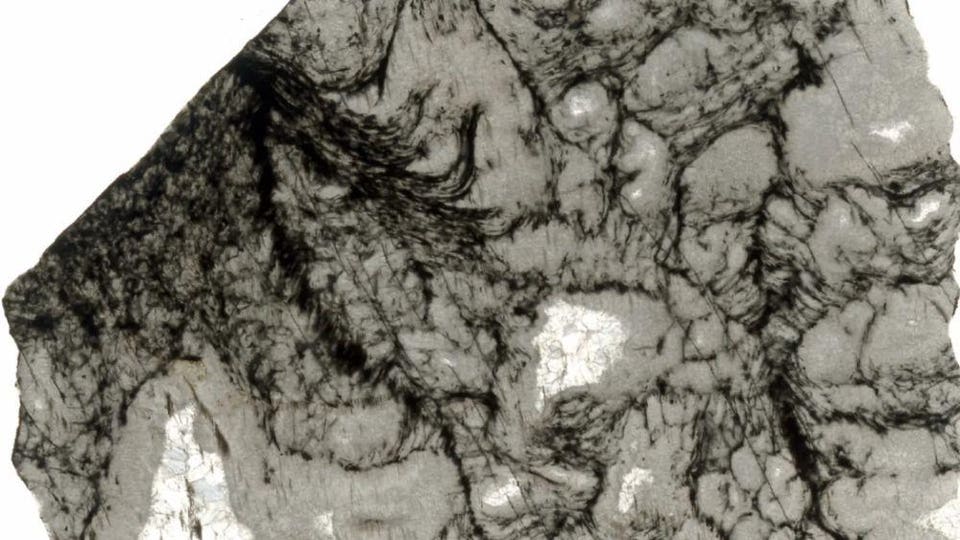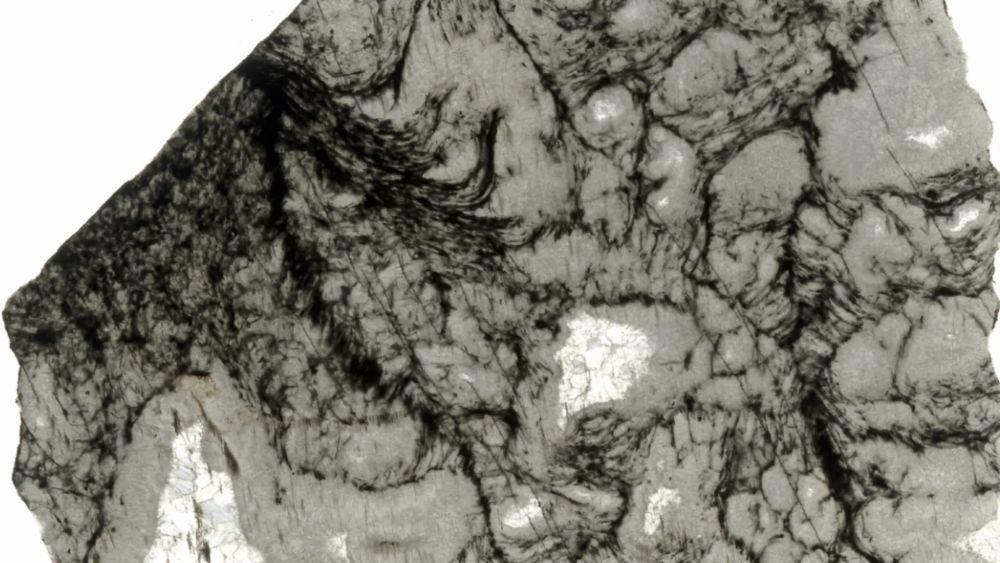
A 2.5-billion-year-old rock from South Africa’s Gamohaan Formation. AI analysis suggests the dark structures preserved in the rock are the remains of a complex microbial community.
Andrea Corpolongo/Carnegie Science
Pairing cutting-edge chemistry with artificial intelligence, a multidisciplinary team of scientists found fresh chemical evidence of Earth’s earliest life — concealed in 3.3-billion-year-old rocks — and molecular evidence that oxygen-producing photosynthesis was occurring over 800 million years earlier than previously documented.
The oldest undisputed signs of life on Earth were found in 3.48-billion-year-old rocks from the Dresser Formation in Western Australia’s Pilbara region, where hot spring deposits preserved what many believe to be cell membranes. But this fossil site is a rare exception, as most of Earth’s earliest life left behind no visible traces.
Until 500 million years ago, Earth was ruled by single-celled organisms and algae, with little tissue and no hard parts to fossilize. If by chance sedimentary rocks preserved faint traces of once living beings, in almost all cases the rocks were repeatedly crushed, heated, and fractured, further blurring or erasing any evidence left behind.
A team of Carnegie researchers along with scientists from several partner universities and institutions, analyzed more than 400 samples, including ancient rocks, fossils, modern plants and animals, compiling a chemical database. This database was then used to train an AI to recognize chemical ‘fingerprints’ left behind by life.
The AI detected chemical patterns linked to life in rocks as old as 3.3 billion years. Previously, no such traces had been found in rocks older than about 1.7 billion years. The AI also found molecular evidence that organisms used sunlight to metabolize carbon compounds at least 2.5 billion years ago. This finding extends the record of photosynthesis by over 800 million years.
The researchers taught the AI to not focus on individual elements, but to look for chemical patterns. Carbon is a typical element found in life as we know it, but carbon compounds can be deposited in a sedimentary rock also by inorganic processes, for example during a volcanic eruption, or come from carbon-rich meteorites. But these sources show a random distribution, while living cells need and produce few kinds of molecules in high abundance.
“Our results show that ancient life leaves behind more than fossils; it leaves chemical ‘echoes.’ Using machine learning, we can now reliably interpret these echoes for the first time,” study coauthor Robert Hazen, a geochemist based at the Carnegie Institution’s Geophysical Laboratory and George Mason University, explains.
The new method not only could help find signs of life in 4.2-billion-year-old rocks from Canada, suspected to hold some traces of ancient microorganisms, but also assist in the search for extraterrestrial life. If an AIcan detect biotic echoes of terrestrial life billion of years old, the same technique might work on Martian rocks or even samples from Jupiter’s icy moon Europa, both worlds were — in theory — life once could have existed (and maybe even exists today).
The full study, “Organic geochemical evidence for life in Archean rocks identified by pyrolysis–GC–MS and supervised machine learnings,” was published in the journal Proceedings of the National Academy of Sciences, and can be found online here.
Additional material and interviews provided by Carnegie Science.

